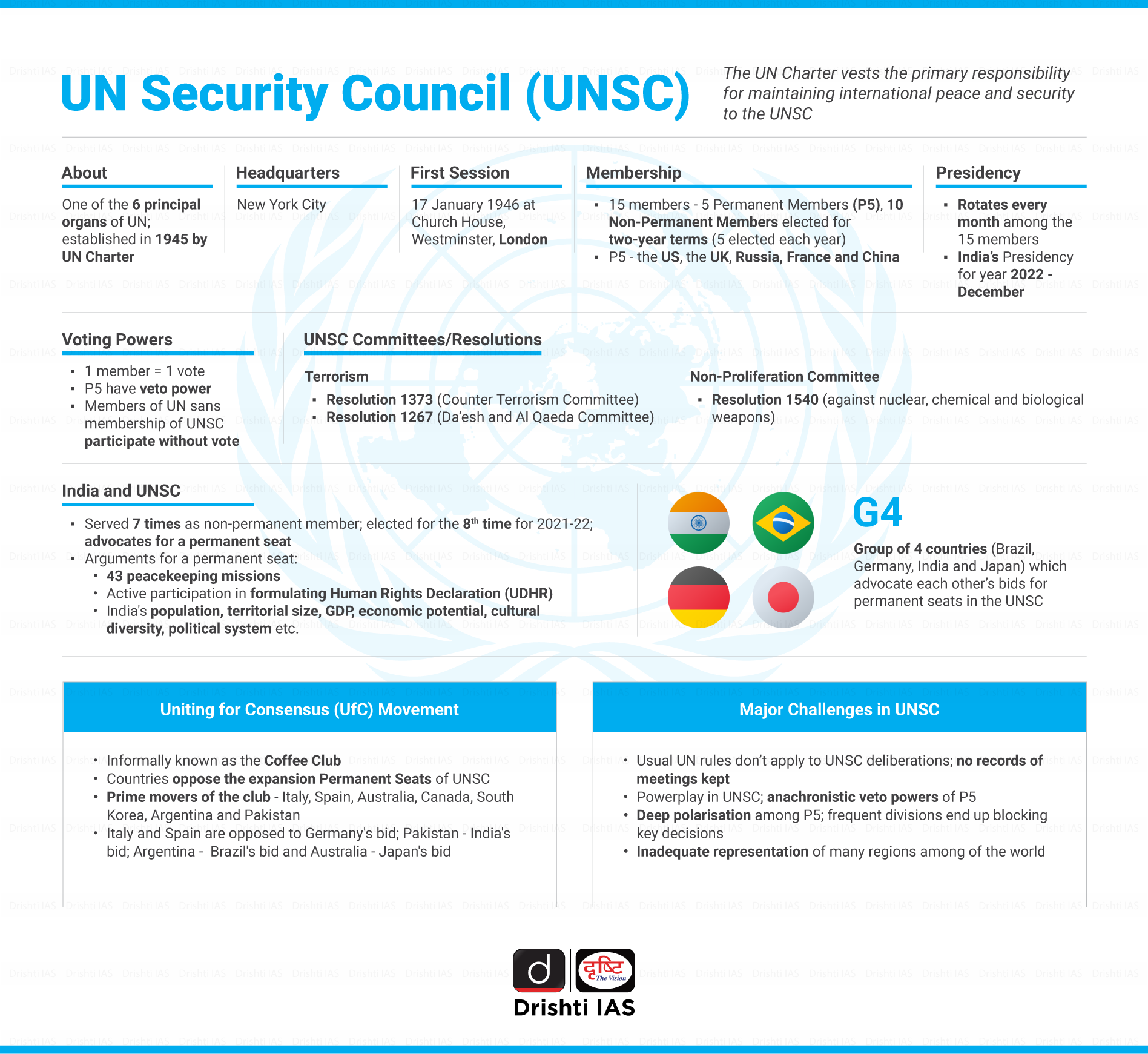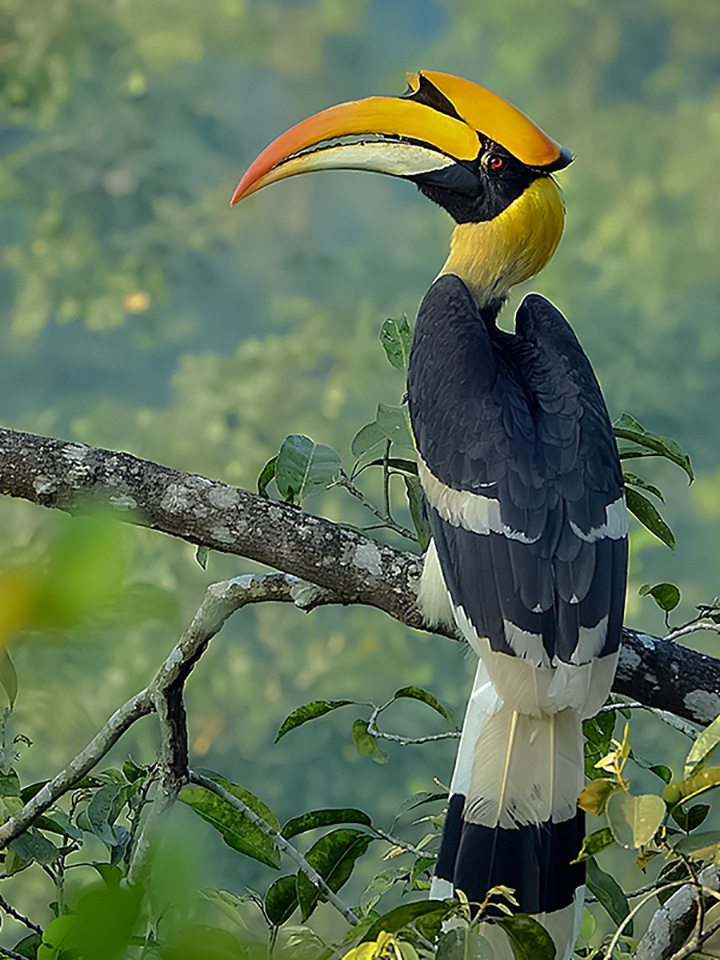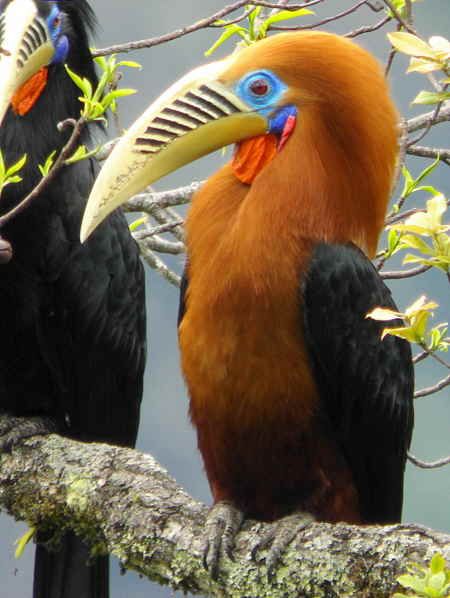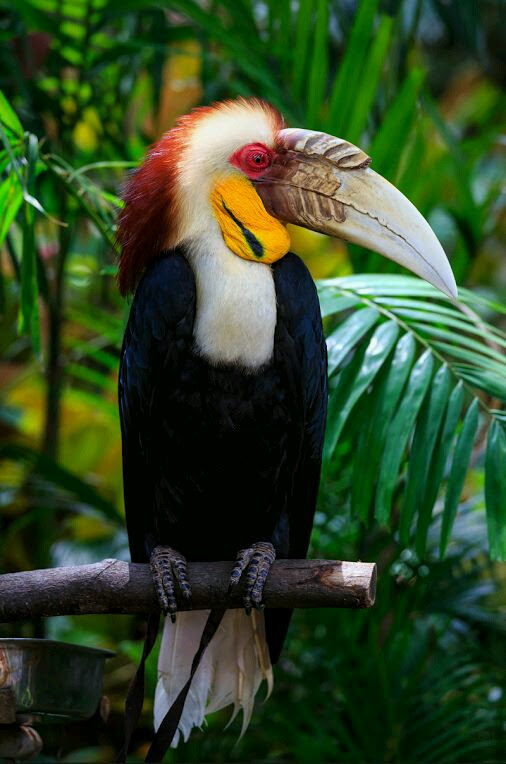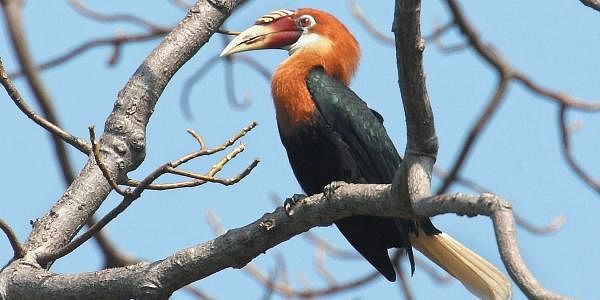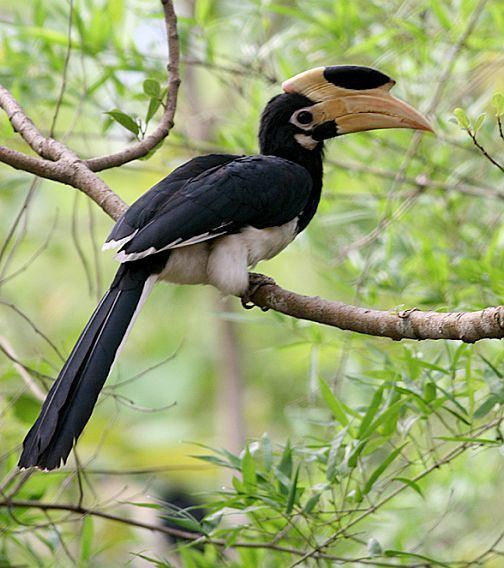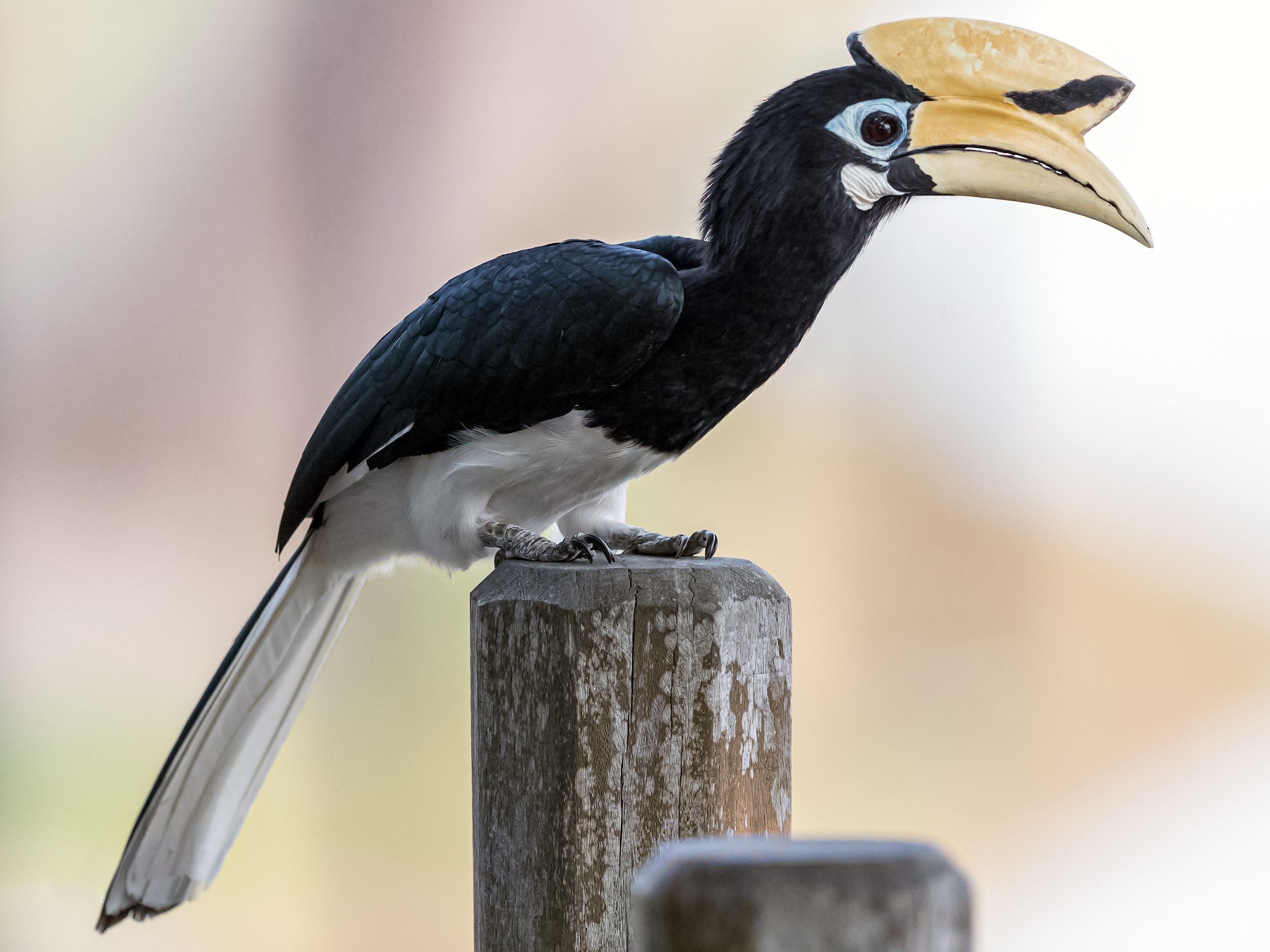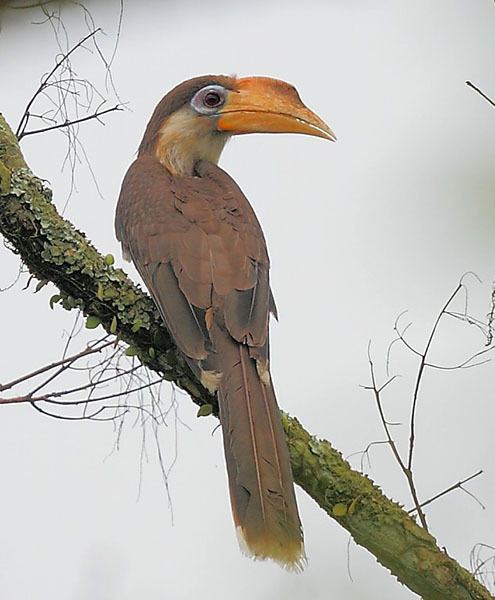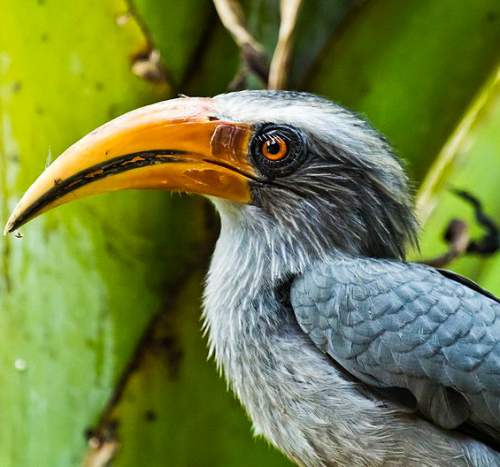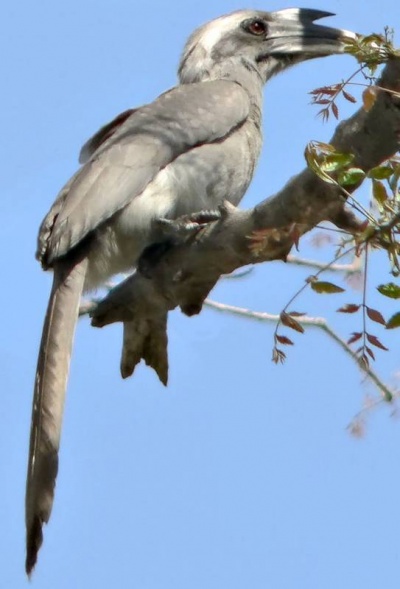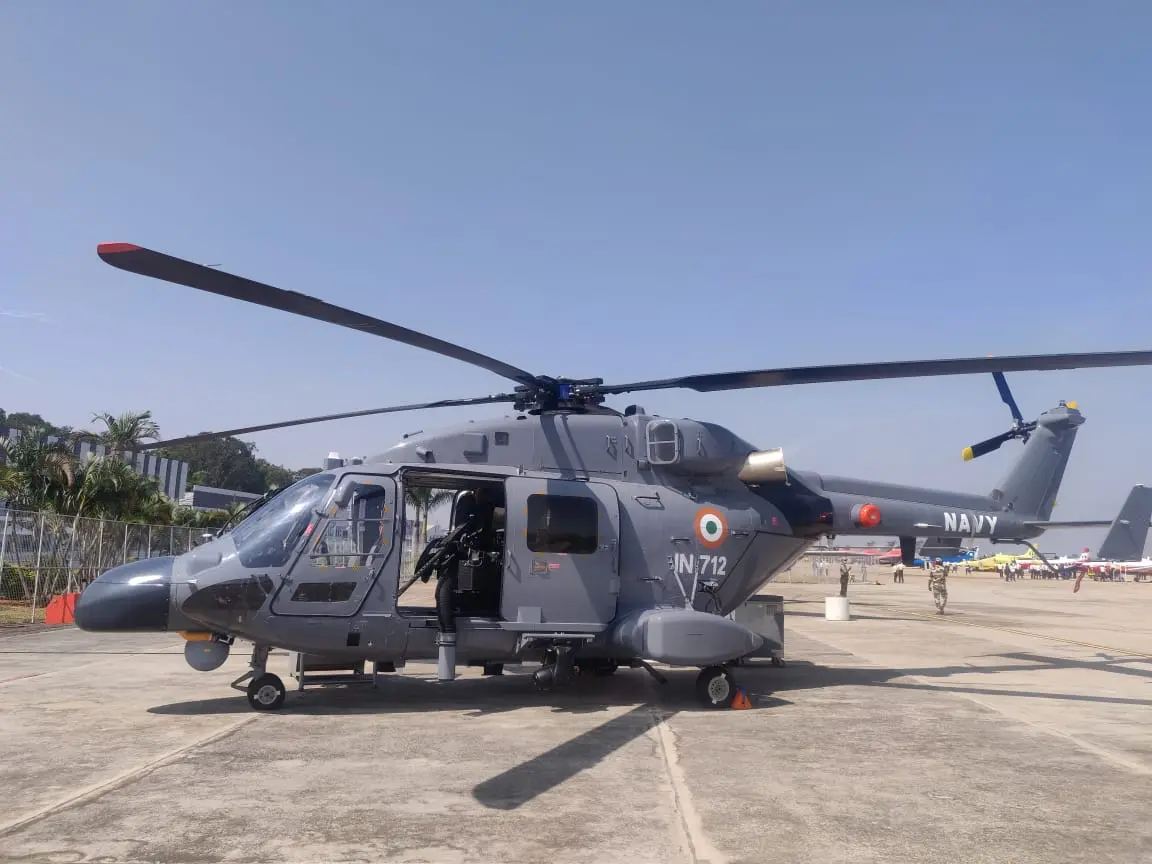Infographics
International Relations
Presidency of India at the UNSC
For Prelims: UNSC, UN Secretary-General, International Court of Justice, Covid-19 pandemic,
For Mains: Promote Common Security Through Dialogue and Cooperation, UNSC Meeting.
Why in News?
On 1st December, India assumed the monthly rotating presidency of the UN Security Council (UNSC) for the second time in its two-year tenure as an elected member of the Council in 2021-22.
- India had earlier assumed UNSC presidency in August 2021.
What are the Events ahead under India’s Presidency?
- Reformed Multilateralism:
- India will hold a “high-level open debate” on “Maintenance of International Peace and Security: New Orientation for Reformed Multilateralism (NORMS)” at the Security Council.
- The NORMS envisages reforms in the current multilateral architecture, with the UN at its centre, to make it more representative and fit for purpose.
- India will hold a “high-level open debate” on “Maintenance of International Peace and Security: New Orientation for Reformed Multilateralism (NORMS)” at the Security Council.
- Counter-Terrorism:
- The other signature event planned is the high-level briefing on the theme “Threats to International Peace and Security Caused by Terrorist Acts: Global Approach to Counter Terrorism — Challenges and Way Forward”.
- This briefing intends to underscore the necessity of collective and coordinated efforts to combat the menace of terrorism.
- The other signature event planned is the high-level briefing on the theme “Threats to International Peace and Security Caused by Terrorist Acts: Global Approach to Counter Terrorism — Challenges and Way Forward”.
What is UNSC?
- About:
- The Security Council was established by the UN Charter in 1945. It is one of the six principal organs of the United Nations.
- The other 5 organs of the United Nations are—the General Assembly (UNGA), the Trusteeship Council, the Economic and Social Council, the International Court of Justice, and the Secretariat.
- The UNSC, with a mandate to maintain international peace and security, is the centrepiece of global multilateralism.
- The Secretary-General is appointed by the General Assembly, on the recommendation of the Security Council.
- The UNSC and UNGA jointly elect judges to the International Court of Justice.
- The Security Council was established by the UN Charter in 1945. It is one of the six principal organs of the United Nations.
- Composition:
- The UNSC is composed of 15 members: 5 permanent and 10 non-permanent.
- Five permanent members: China, France, the Russian Federation, the United Kingdom, and the United States.
- Ten non-permanent members: Elected for two-year terms by the General Assembly.
- Five from African and Asian States,
- One from Eastern European States,
- Two from Latin American States,
- Two from Western European and other States.
- India’s Membership:
- India has served seven times in the UN Security Council as a non-permanent member and in January 2021, India entered the UNSC for the eighth time.
- India has been advocating a permanent seat in UNSC.
- Voting Powers:
- Each member of the Security Council has one vote. Decisions of the Security Council on matters are made by an affirmative vote of nine members including the concurring votes of the permanent members.
- A "No" vote from one of the five permanent members blocks the passage of the resolution.
- Responsibilities:
- The UNSC brokers peace by helping parties reach an agreement through mediation, appointing special envoys, dispatching a UN Mission or requesting the UN Secretary-General to settle the dispute.
- It can also vote to extend, amend or end mission mandates.
- The Security Council oversees the work of UN peace operations through periodic reports from the Secretary-General and council sessions. It alone can make decisions regarding these operations, which Member States are obligated to enforce.
What are the Issues with UNSC?
- The Loss of Relevance:
- The council has been criticised for losing relevance and credibility.
- According to India's External Affairs Minister, the UNSC has narrow leadership and a need for a new approach, hence a call to push for the “refresh button”.
- The council has been criticised for losing relevance and credibility.
- Lack of Multilateralism:
- The council’s lack of multilateralism has also been criticised in the wake of the Syrian war crisis and the ongoing Covid-19 pandemic.
- Less Representative:
- It was argued by several speakers that the UN Security Council is less effective because it is less representative, the most pertinent absence being that of Africa, a continent of 54 countries.
- Misuse of Veto Power:
- Veto power has been always criticised by many experts as well as by most States calling it a “self-chosen club of the privileged” and non-democratic and not allowing the Council to make necessary decisions whenever it displeases any one of the P-5.
- Taking the current world order as an example, the P5 members: United States, Russia, and China are three poles on the periphery of the globe having several geopolitical issues revolving around them (Taiwan Issue and Russia-Ukraine War).
- Veto power has been always criticised by many experts as well as by most States calling it a “self-chosen club of the privileged” and non-democratic and not allowing the Council to make necessary decisions whenever it displeases any one of the P-5.
Way Forward
- UNSC should realise there are more pressing issues to be tackled at the global level than merely preserving the prerogatives of P5 nations.
- There needs to be urgent correction of the power imbalance between the P5 and the rest of the world.
- In order to protect faith in the principles of the United Nations, in its charter, and in reformed multilateralism as a key to achieving global goals, the core issues in UNSC must be critically examined and addressed with global cooperation.
UPSC Civil Services Examination Previous Year Question (PYQ)
Prelims
Q. The Security Council of UN consists of 5 permanent members, and the remaining 10 members are elected by the General Assembly for a term of (2009)
(a) 1 year
(b) 2 years
(c) 3 years
(d) 5 years
Ans: (b)
Mains
Q. Discuss the impediments India is facing in its pursuit of a permanent seat in UN Security Council. (2015)


Governance
Upgrade in Land Records
For Prelims: Forest Right Act 2006, Digital Land Records, Government’s Initiative
For Mains: Features Forest Right Act, Digital Land Records, Geographic Information System, Related Initiatives
Why in News?
Recently, the Union Government has written a letter to states across the country, directing them to record Settlement Rights in Revenue and Forest Records within a period of three months.
- The letter stated that the revenue and forest departments should prepare a final map of the forest land that was vested to communities under the The Forest Rights Act (FRA), 2006.
What are the Key Points of the Notification?
- About:
- Digital information on the record of rights (RoR) (a legal document that gives details about the land and who owns it) under The Scheduled Tribes and Other Traditional Forest Dwellers (Recognition of Forest Rights) Act, 2006 or Forest Right Act (FRA) will also be integrated in the PARIVESH portal and other web Geographic Information System (GIS) platforms of central and state government departments.
- It would be done after completion of the process of settlement of rights and issuance of titles. The map should then be incorporated in the land records under relevant state laws.
- The ministry has also directed states to undertake geographic information system (GlS) surveys of each land patch and maintain geo-referenced digital vector boundaries of the polygons.
- Digital information on the record of rights (RoR) (a legal document that gives details about the land and who owns it) under The Scheduled Tribes and Other Traditional Forest Dwellers (Recognition of Forest Rights) Act, 2006 or Forest Right Act (FRA) will also be integrated in the PARIVESH portal and other web Geographic Information System (GIS) platforms of central and state government departments.
- Benefits:
- Land records with data of FRA titles eliminates the conflict between tribals and officials.
- Sometimes, a piece of land that has been allotted under FRA, is also diverted for afforestation and this creates a lot of problems for both parties.
- Geo-referencing of RoR under FRA will be beneficial for the people of the states as the forest and tribal welfare departments will be able to initiate specific projects and schemes for improving the livelihoods of the FRA title holders.
- Land records with data of FRA titles eliminates the conflict between tribals and officials.
What is the Forest Rights Act, 2006?
- The Act recognizes and vests the forest rights and occupation in Forest land in Forest Dwelling Scheduled Tribes (FDST) and Other Traditional Forest Dwellers (OTFD) who have been residing in such forests for generations.
- Forest rights can also be claimed by any member or community who has for at least three generations (75 years) prior to the 13th day of December, 2005 primarily resided in forest land for bona fide livelihood needs.
- It strengthens the conservation regime of the forests while ensuring livelihood and food security of the FDST and OTFD.
- The Gram Sabha is the authority to initiate the process for determining the nature and extent of Individual Forest Rights (IFR) or Community Forest Rights (CFR) or both that may be given to FDST and OTFD.
- The Act identifies four types of rights:
- Title Rights:
- It gives FDST and OTFD the right to ownership to land farmed by tribals or forest dwellers subject to a maximum of 4 hectares. Ownership is only for land that is actually being cultivated by the concerned family and no new lands will be granted.
- Use Rights:
- The rights of the dwellers extend to extracting Minor Forest Produce, grazing areas etc.
- Relief and Development Rights:
- To rehabilitate in case of illegal eviction or forced displacement and to basic amenities, subject to restrictions for forest protection.
- Forest Management Rights:
- It includes the right to protect, regenerate or conserve or manage any community forest resource which they have been traditionally protecting and conserving for sustainable use.
- Title Rights:
What are India’s Initiatives for Digital Land Records?
- SVAMITVA:
- SVAMITVA is a scheme for mapping the land parcels in rural inhabited areas using drone technology and Continuously Operating Reference Station (CORS).
- The mapping will be done across the country in a phase-wise manner over a period of four years - from 2020 to 2024.
- PARIVESH Portal:
- PARIVESH is a web-based application which has been developed for online submission and monitoring of the proposals submitted by the proponents for seeking Environment, Forest, Wildlife and Coastal Regulation Zones (CRZ) Clearances from Central, State and district level authorities.
- Bhumi Samvaad:
- Bhumi Samvaad is a National Workshop on Digital India Land Record Modernisation Programme (DILRMP).
- It attempts to build upon the commonalities that exist in the arena of land records in various States to develop an appropriate Integrated Land Information Management System (ILIMS) across the country, on which different States can also add State-specific needs as they may deem relevant and appropriate.
- National Generic Document Registration System:
- It is a major shift from the existing manual registration system to online registration of all transactions in sale-purchase and transfer of land.
- It is a big step towards National Integration and a leap towards ‘One Nation One Software’.
- Unique Land Parcel Identification Number:
- Being described as “the Aadhaar for land", Unique Land Parcel Identification Number is a number that would uniquely identify every surveyed parcel of land and prevent land fraud, especially in the hinterlands of rural India, where land records are outdated and often disputed.
What is the Geographic Information System (GIS)?
- A GIS is a computer system for capturing, storing, checking, and displaying data related to positions on Earth’s surface.
- By relating seemingly unrelated data, GIS can help individuals and organizations better understand spatial patterns and relationships.
- GIS can use any information that includes location.
- The location can be expressed in many different ways, such as latitude and longitude, address, or ZIP code.
- GIS can include data about people, such as population, income, or education level.
- It can also include information about the sites of factories, farms, and schools, or storm drains, roads, and electric power lines etc.
UPSC Civil Services Examination, Previous Year Question (PYQ)
Q1. At the national level, which ministry is the nodal agency to ensure effective implementation of the Scheduled Tribes and Other Traditional Forest Dwellers (Recognition of Forest Rights) Act, 2006? (2021)
(a) Ministry of Environment, Forest and Climate Change
(b) Ministry of Panchayati Raj
(c) Ministry of Rural Development
(d) Ministry of Tribal Affairs
Ans: (d)
Exp:
- The Scheduled Tribes and Other Traditional Forest Dwellers (Recognition of Forest Rights) Act, 2006, also referred to as the Forest Rights Act (FRA), 2006, recognizes the rights of the forest-dwelling tribal communities and other traditional forest dwellers to forest resources.
- The Act encompasses Rights of self-cultivation and habitation which are usually regarded as individual rights; and community rights as grazing, fishing and access to Water bodies in forests, habitat rights for PVTGs, etc.
- In conjunction with the Right to Fair Compensation and Transparency in Land Acquisition, Rehabilitation and Settlement Act, 2013, FRA protects the tribal population from eviction without rehabilitation and settlement.
- As per the provisions of the Act and the rules framed thereunder, various schemes and projects are implemented under the Ministry of Tribal Affairs.
- Therefore, option (d) is the correct answer.
Q2. Consider the following statements: (2018)
- The definition of “Critical Wildlife Habitat” is incorporated in the Forest Rights Act, 2006.
- For the first time in India, Baigas have been given Habitat Rights.
- Union Ministry of Environment, Forest and Climate Change officially decides and declares Habitat Rights for Primitive and Vulnerable Tribal Groups in any part of India.
Which of the statements given above is/are correct?
(a) 1 and 2 only
(b) 2 and 3 only
(c) 3 only
(d) 1, 2 and 3
Ans: (a)
Exp:
- “Critical Wildlife Habitat” has been defined in the Forest Rights Act, 2006 as such areas of National Parks and Sanctuaries that are required to be kept as inviolate for the purpose of wildlife conservation as may be determined and notified by the Central Government. Hence, statement 1 is correct.
- The Baiga community (largely in Madhya Pradesh) is one of the 75 Particularly Vulnerable Tribal Groups (PVTGs) in India, who are eligible to get Habitat Rights under the Forest Rights Act, 2006. Over the years, increasing state control over forests and diversion of forest land for development and conservation has seriously threatened these forest communities. The Government of Madhya Pradesh in 2015 recognised the habitat rights of Baigas and the tribe became the first community in India to get the habitat rights. Hence, statement 2 is correct.
- The Habitat Rights of the PVTGs are recognized by the District Level Committee in the States. The Ministry of Tribal Affairs clarifies the scope and extent of the definition of habitat rights in the context of PVTGs. Hence, statement 3 is not correct.
- Therefore, option (a) is the correct answer.


Economy
Impact of Global Layoffs
For Prelims: Global Layoffs, Economic Recession, GDP, Employment, Russia-Ukraine Conflict, Covid-19.
For Mains: Impact of Global Layoffs on India.
Why in News?
Recently, many of U.S. multinational companies has announced massive layoffs, which already crossed 60,000 in September and October 2022.
- A layoff is the temporary or permanent termination of employment by an employer for reasons unrelated to the employee's performance.
What are the Reasons for Layoffs?
- Cost Cutting:
- With talks of global recession, technology companies, typically seen as big spenders, are now resorting to cost-cutting.
- Cost-cutting is one of the main reasons for lay off because the companies are not making enough profits to cover their expenses or because they need substantial extra cash to address paying off debt.
- Indian Startups have also faced this trouble with media reports saying that more than ten thousand employees have been laid off by startups in mainly edtech and ecommerce sectors in 2022.
- Fear of Economic Recession:
- These companies are apprehensive of potential economic recession, with inflation soaring in most parts of the world.
- The International Monetary Fund (IMF) has cited forecasts for global GDP (Gross Domestic Product) growth in both 2022 and 2023 as gloomy, given the pandemic and ongoing Russia-Ukraine Conflict.
- Decreasing Dependence on Online Platform:
- During the pandemic, there was a surge in demand as people were in lockdown and they were spending a lot of time on the internet. The overall consumption saw an upsurge following which the companies went to increase their output to meet the market requirements.
- In order to meet the demands, many tech companies went on a hiring spree anticipating the boom to continue even after the pandemic.
- However, as the curbs were eased and people started stepping out of their homes, consumption fell, resulting in heavy losses to these big tech companies. Some of these resources were hired at a higher cost because of the sudden upsurge in demand.
What is the Outlook for the Indian Companies?
- The Indian IT services firms are among the largest employers in the organised sector and any global economic trend is bound to have an impact on their growth projections.
- Managements look at headcount numbers critically when they want to cut costs and protect profit margins as they are accountable to investors.
- Though there isn’t a discernible trend yet, there are a few signs which may signal what is to be expected in the next few months.
- All top companies except Wipro saw a rise in revenue and net profit. Wipro’s net profit slid 9% from a year earlier for the quarter ended September.
- The attrition rates, or the number of employees per 100 quitting on their own, of the top two firms, TCS and Infosys, show that these rates are still high, which means that there is enough business for the sector for competitors to draw away employees with promise of higher salaries.
- News of layoffs in the Indian start-up front is predominantly in EDtech, or the educational technology front.
What can be the Impact of Layoffs?
- Loss to the Workers:
- Layoffs can be damaging psychologically as well as financially to the affected workers as well as their families, communities, colleagues, and other businesses.
- Loss of Prospects:
- Indian workers who have been laid-off have a big worry. If they are unable to find a new employer within 60 days, they are faced with the prospect of leaving the U.S. and re-entering later.
- To make matters worse, the prospects of these Indian workers back home are also weak.
- Most Indian IT companies have frozen or slowed down hiring as recessionary fears in the U.S. and high inflation in Europe have kept demand low.
- Decreases Customer Prospect
- When a company lays off its employees it sends out a message to customers that it is undergoing some sort of crisis.
- Emotional Distress:
- The person who is laid off suffers the most distress, but remaining employees suffer emotionally as well. The productivity level of employees who work in fear is likely to go down.
What happened in India during earlier Global Recessions?
- During earlier global recessions, while companies seldom publicly announced layoffs, they would all look to ease out staff who were lower down the performance ladder.
- Companies that were in a particularly bad patch cut bench strength. Then again, if a person was about a month old on the bench (i.e., without projects), he or she may have been asked to sign up for some training courses etc.
- If the professional spent more than three months on the bench and had not landed a project, the system itself would ease him or her out.
- What happened in the aftermath of the 2008 recession that stretched well beyond 2-3 years is that companies would start slowing down headcount addition.
- Planned additions from campus would decline or offers would be made but absorption into the company could well take 9-12 months from the time of offer.
Way Forward
- Indian startups grew at a faster pace than its neighboring regions. Just because a startup had touched a sky-high valuation did not immediately mean its employees’ jobs were insured.
- Voluntary retirement programs can enable individuals to transition to retirement smoothly.


Biodiversity & Environment
Green Cooling Solutions in India by 2040
For Prelims: Green Cooling Solutions in India by 2040, World Bank, ICAP, Green House Gas, PMAY, Thermal Comfort.
For Mains: Green Cooling Strategies for Sustainable Development.
Why in News?
According to the report ‘Climate Investment Opportunities in India's Cooling Sector’ released by the World Bank Group, investment opportunities in India’s cooling sector through less carbon-intensive technologies could add up to USD 1.6 trillion.
What are the Highlights of the Report?
- The report analyzed the India Cooling Action Plan (ICAP) launched in 2019 and came up with suggestions for prioritizing the government’s investment opportunities in the cooling sector.
- The report does not focus on air conditioning because only 40% of Indians will have air conditioning by 2040 — which is currently around 8% — and the rest for whom passive cooling technologies have to be the focus.
- Investment opportunities across three different sectors — construction, cold chains and refrigerants — have the potential to reduce greenhouse gas (GHG) emissions significantly and also create nearly 3.7 million jobs.
- Around 34 million people in the country might lose their jobs because of heat stress and subsequent decline in productivity.
- The world is already on a path where there would be many more intense heat waves like the one India witnessed in 2022
- Heat stress is set to increase drastically in a world on its way to a two-three degree rise in temperatures.
What are the Recommendations?
- Sustainable Space Cooling:
- Sustainable space cooling solutions may reduce annual GHG emissions by 213 metric tonnes of carbon dioxide equivalent by 2040.
- This can be achieved by increasing the efficiency of cooling technologies — air conditioners, ceiling fans and chillers — which can save 30% energy by 2037-38.
- Passive Cooling Strategies:
- Passive cooling strategies for buildings in cities can reduce energy usage by 20-30% by 2038.
- A drop in the temperature of a building by one degree Celsius could lower peak electricity demand for cooling by two-four per cent.
- Thermal Comfort:
- Government should include a thermal comfort programme in its affordable housing Programme, Pradhan Mantri Awas Yojana (PMAY).
- Thermal comfort through passive cooling technologies in these households could benefit over 11 million urban households and 29 million households in rural areas that the government wants to construct.
- This would also ensure that the people most affected by rising temperatures are not disproportionately affected.
- District Cooling Systems (DCS):
- DCS are centralized cooling techniques for clusters of buildings instead of individual buildings, which is much more efficient.
- District cooling should be made mandatory for real estate complexes that are of high density.
- DCS generates chilled water in a central plant which can then be distributed to multiple buildings via underground insulated pipes.
- Cold Chain and Refrigeration:
- It is suggested to use concessional finance from Multilateral Development Banks like the World Bank for investments in strategies to plug the gaps in the cold chain distribution networks.
- Such investments can help reduce food loss by about 76% and decrease carbon emissions by 16%.
What is ICAP?
- It seeks to recognize “cooling and related areas” as a thrust area of research under the National S&T Programme.
- It is part of India’s national strategy for cooling, whose objective is to reduce country-wide demand for cooling by 25 % by 2037-2038.
- It also seeks to reduce cooling energy requirements by 25% to 40% by 2037-38.
- Training and certification of 1,00,000 servicing sector technicians by 2022-23, in synergy with Skill India Mission.
- It also makes provision for cooling for Economically Weaker Section (EWS) and Low-Income Group (LIG) housing.
- In line with Montreal Protocol, the plan emphasizes cutting those elements that deplete the ozone layer.
- Its goal is to provide sustainable cooling and thermal comfort for all while securing environmental and socio-economic benefits for the society.


Social Justice
Tribal Development Report 2022
For Prelims: Tribal Development Report 2022, Scheduled Tribe, Eklavya Model Residential Schools, TRIFED.
For Mains: Recent Government Initiatives Related to Tribes.
Why in News?
Recently, the Tribal Development Report 2022 was launched by the Bharat Rural Livelihood Foundation (BRLF), which claims to be the first of its kind since 1947.
- The BRLF was set up by the Union Cabinet in 2013 as an independent society under the Union Ministry of Rural Development to scale up civil society action in partnership with central and state governments.
What are the Findings of the Report?
- Tribal Population:
- India’s tribal communities form 8.6% of the country’s population according to the 2011 Census. But they are at the bottom of the country’s development pyramid even after 75 years of independence.
- Central India is home to 80% of the tribal communities in the country.
- Of the 257 Scheduled Tribe districts, 230 (90%) are either forested or hilly or dry. But they account for 80 % of India’s tribal population.
- Tribals are most Deprived:
- Be it sanitation, education, nutrition, access to drinking water and education, despite 70 years of independence, Adivasis are the most deprived.
- Disturbances and Conflict in Tribal Regions:
- Tribal areas are also areas that have faced a lot of disturbance and conflict. This is one of the reasons why many government welfare schemes and policies are unable to take off in these areas. Distress in the area affects both sides.
- Pushed into Harshest Ecological Regions:
- The report stated that indigenous communities of India have been pushed farther away from alluvial plains and fertile river basins into the harshest ecological regions of the country like hills, forests, and drylands.
- Forest Conservation Act in 1980:
- After the enactment of the Forest Conservation Act in 1980, the conflict came to be seen as between environmental protection and the needs of local Adivasi communities, driving a wedge between people and forests.
- It was in the National Forest Policy of 1988 that domestic requirements of local people were explicitly recognised for the very first time.
- The Policy emphasised safeguarding their customary rights and closely associating Adivasis in the protection of forests. But the movement towards a people-oriented perspective has not been matched by reality on the ground.
- Suggestions:
- It is important to understand the special characteristics of tribal communities to frame policies for them.
- There are many tribal communities that prefer isolation and silence. They are shy and are not going to reach out to the outside world on their own. Policy makers and leaders of the country need to understand this trait and then work towards the welfare of Adivasis so that they connect with them in a better way.
What are the Government Initiatives Related to Tribes?
UPSC Civil Services Examination Previous Year Question (PYQ)
Prelims
Q. Under which Schedule of the Constitution of India can the transfer of tribal land to private parties for mining be declared null and void? (2019)
(a) Third Schedule
(b) Fifth Schedule
(c) Ninth Schedule
(d) Twelfth Schedule
Ans: (b)
Exp:
- Grant of mineral concessions in Scheduled Areas is guided by the provisions contained in Article 244 along with Fifth and Sixth Schedules to the Constitution relating to administration of the Scheduled Areas and Tribal Areas and the provisions of the Panchayats (Extension to the Scheduled Areas) Act, 1996 and the Scheduled Tribes and Other Traditional Forest Dwellers (Recognition of Forest Rights) Act, 2006 or any other relevant statutory acts protecting the interests of tribals.
- Under the Fifth Schedule, the Governor may by public notification, direct that any particular Act of Parliament or of the Legislature of the State shall or shall not apply to a Scheduled Area or any part thereof in the State.
- Thus, under Fifth Schedule, transfer of tribal land to private parties for mining can be declared null and void. Therefore, option (b) is the correct answer.
Mains
Q. How do you explain the statistics that show that the sex ratio in Tribes in India is more favourable to women than the sex ratio among Scheduled Castes? (2015)


Important Facts For Prelims
Nagaland Statehood Day
Why in News?
Recently, Nagaland has celebrated its 60th Statehood Day on December 1st 2022.
- Nagaland statehood day also marks the beginning of Hornbill festival in Nagaland.
What are the Key Facts about Nagaland?
- About:
- Nagaland was formally recognised as a separate state on 1st December, 1963, with Kohima being declared as its capital.
- The State of Nagaland Act, 1962, was enacted by the Parliament to give Nagaland statehood.
- Historical Background:
- After India became independent in 1947, the Naga territory initially remained a part of Assam. However, a strong nationalist movement began seeking a political union of the Naga tribes, and extremists demanded outright secession from the Indian union.
- In 1957, the Naga Hills region of Assam and the Tuensang frontier division to the northeast were brought together under a single unit directly administered by the Indian government.
- In 1960 it was resolved that Nagaland should become a constituent state of the Indian union. Nagaland achieved statehood in 1963, and a democratically elected government took office in 1964.
- Geography:
- It is bounded by the Indian states of Arunachal Pradesh to the northeast, Manipur to the south, and Assam to the west and northwest and the country of Myanmar (Burma) to the east. The state capital is Kohima, located in the southern part of Nagaland.
- Nagaland has a Monsoonal (wet-dry) Climate. Annual rainfall averages between 70 and 100 inches and is concentrated in the months of the southwest monsoon (May to September).
- Biodiversity:
- Flora: Forests cover about one-sixth of Nagaland. Below 4,000 feet are tropical and subtropical evergreen forests, containing palms, rattan, and bamboo, as well as valuable timber species. Coniferous forests are found at higher elevations. Areas cleared for jhum (shifting cultivation) have a secondary growth of high grass, reeds, and scrub jungle.
- Fauna: Elephants, tigers, leopards, bears, several kinds of monkeys, sambar deer, buffalo, wild oxen, and the occasional rhinoceros live in the lower hills. Porcupines, pangolins (scaly anteaters), wild dogs, foxes, civet cats, and mongooses also are found in the state.
- Mithun (Gayal) is the state animal of Nagaland and Arunachal Pradesh.
- Blyth's tragopan is the state bird of Nagaland.
- Tribes:
- The Konyaks are the largest tribe, followed by the Aos, Tangkhuls, Semas, and Angamis.
- Other tribes include the Lothas, Sangtams, Phoms, Changs, Khiem Hungama, Yimchunger, Zeliangs, Chakhesangs (Chokri), and Rengmas.
- Economy:
- Agriculture employs about nine-tenths of the population. Rice, corn (maize), small millets, pulses (legumes), oilseeds, fibres, sugarcane, potato, and tobacco are the principal crops.
- Nagaland, however, still has to depend on imports of food from neighbouring states.
- Protected Areas in Nagaland:
- Intanki National Park
- Singphan Wildlife Sanctuary
- Pulie Badze Wildlife Sanctuary
- Fakim Wildlife Sanctuary
- Major Festival:
- The Hornbill Festival is a celebration held every year from 1st to 10th December, in Nagaland.
- This festival is named after the bird – Hornbill which is the most revered and admired bird for the Nagas.
- The significance of the festival lies in the fact that it is not an ancient festival, and it was started in the year 2000 to popularise Nagaland among the tourists.
What are Hornbills?
- About: The hornbills (Family Bucerotidae) are a family of birds found in tropical and subtropical Africa and Asia.
- In India: India is home to nine species of hornbills.
- The northeastern region has the highest diversity of hornbill species within India.
- They are the cultural symbols of some ethnic communities in the northeast, specifically the Nyishi of Arunachal Pradesh.
- Threats:
- Hornbills are hunted for their casques - upper beak - and feathers for adorning headgear. They are also poached for their meat and medicinal value of their body parts.
- A conservation programme promoting the use of fibre-glass beaks for headgear instead of real hornbill casques has helped reduce some threat to it.
- Illegal logging i.e. cutting of tall trees where the hornbill birds nest and feed has led to destruction of its natural habitat.
- Hornbills are hunted for their casques - upper beak - and feathers for adorning headgear. They are also poached for their meat and medicinal value of their body parts.
|
India’s 9 Hornbill Species |
||
|
Rufous-necked Hornbill |
|
|
|
|
|
|
|
UPSC Civil Services Examination, Previous Year Question (PYQ)
Q. In which of the following regions of India are you most likely to come across the ‘Great Indian Hornbill’ in its natural habitat? (2016)
(a) Sand deserts of northwest India
(b) Higher Himalayas of Jammu and Kashmir
(c) Salt marshes of western Gujarat
(d) Western Ghats
Ans: (d)
Exp:
- Great Indian Hornbills are large and wide-ranging birds and most species are dependent on tropical forest habitats that contain large and tall trees.
- India has nine Hornbill species, of which four are found in the Western Ghats – Indian Grey Hornbill (endemic to India), Malabar Grey Hornbill (endemic to the Western Ghats), Malabar Pied Hornbill (endemic to India and Sri Lanka) and endangered Great Indian Hornbill. India also has one species that has one of the smallest ranges of any Hornbill – the Narcondam Hornbill, found only on the island of Narcondam in Andaman Sea.
- Therefore, option D is the correct answer.


Important Facts For Prelims
Advanced Light Helicopter (ALH) MK-III Squadron
Why in News?
Recently, an Indian Coast Guard Advanced Light Helicopter Mk-III squadron has been commissioned in Chennai.
What are the Key Facts about ALH Squadron?
- About:
- The ALH Mk-III helicopters, indigenously manufactured by Hindustan Aeronautics Limited (HAL), feature state-of-the-art equipment.
- It includes advanced radar as well as electro-optical sensors, Shakti engines, full glass cockpit, high-intensity searchlight, advanced communication systems, automatic identification system as well as search-and-rescue homer.
- This feature enables the helicopter to undertake maritime reconnaissance as well as carry out search and rescue at extended ranges while operating from ships, both by day and night.
- Role:
- The aircraft has the ability to switch roles from an offensive platform with a heavy machine gun to that of a benign one carrying a medical intensive care unit to facilitate the transfer of critically ill patients.
- The Squadron will give a major fillip to the abilities of the Indian Coast Guard in the security sensitive waters off Tamil Nadu and Andhra Region.


Important Facts For Prelims
National Sports and Adventure Awards 2022
Why in News?
Recently, the Table tennis legend Achanta Sharath Kamal was bestowed with the Major Dhyan Chand Khel Ratna award for his outstanding performance in the Commonwealth Games, 2022 by the President as part of the National Sports and Adventure Awards 2022.
- Other awards given out include the Dronacharya Award, Dhyan Chand Award for Lifetime Achievement in Sports and Games, the Rashtriya Khel Protsahan Puruskar, the Maulana Abul Kalam Azad trophy as well as the Tenzing Norgay National Adventure Award.
What are the Key Facts about the Awards?
- Major Dhyan Chand Khel Ratna Award:
- Formerly known as the Rajiv Gandhi Khel Ratna, it is the highest sporting award given by the Ministry of Youth Affairs and Sports for the spectacular and most outstanding performance in the field of sports by a sportsperson over a period of four years.
- It carries a cash prize of Rs 25 lakh, a medal and a scroll of honour.
- The Khel Ratna award was instituted in 1991-1992 and the first recipient was Chess legend Viswanathan Anand.
- Formerly known as the Rajiv Gandhi Khel Ratna, it is the highest sporting award given by the Ministry of Youth Affairs and Sports for the spectacular and most outstanding performance in the field of sports by a sportsperson over a period of four years.
- Arjuna Award:
- It was instituted in 1961 by the Government of India to recognise outstanding achievement in national sports events.
- It is given for good performance over a period of previous four years and showing qualities of leadership, sportsmanship and a sense of discipline.
- The award carries a cash prize of Rs 15 lakh, a bronze statue of Arjuna and a scroll of honour.
- Dronacharya Award:
- It was instituted in 1985 by the Government of India to recognise excellence in sports coaching.
- It is given to coaches for doing outstanding and meritorious work on a consistent basis and enabling sportspersons to excel in international events.
- It carries a cash prize of Rs 15 lakh, a bronze statue of Dronacharya and a scroll of honour.
- Dhyan Chand Award:
- It was instituted in the year 2002 and comprises a Dhyan Chand statuette, a cash prize of Rs 10 lakh, a certificate and a ceremonial dress.
- It is given to honour sportspersons who have contributed to sports by their performance and continue to contribute to promotion of sports events after their retirement.
- Maulana Abul Kalam Azad Trophy:
- It was instituted in the year 1956-1957.
- It is for university-level sports performances.
- It is given to a university for "top performance in the inter-university tournaments" over the period of the last one year.
- Rashtriya Khel Protsahan Puruskar:
- It was instituted in the year 2009.
- It is given to corporate entities (both in private and public sector), sports control boards, NGOs including sports bodies at the State and National level who have played a visible role in the area of sports promotion and development.
- Tenzing Norgay National Adventure Awards:
- The awards are given every year to recognize the achievements of persons in the fields of adventure, to encourage young people to develop the spirit of endurance, risk–taking, cooperative teamwork and quick, ready and effective reflexes in challenging situations and to provide incentive to the young people for getting exposed to the adventure activities.



